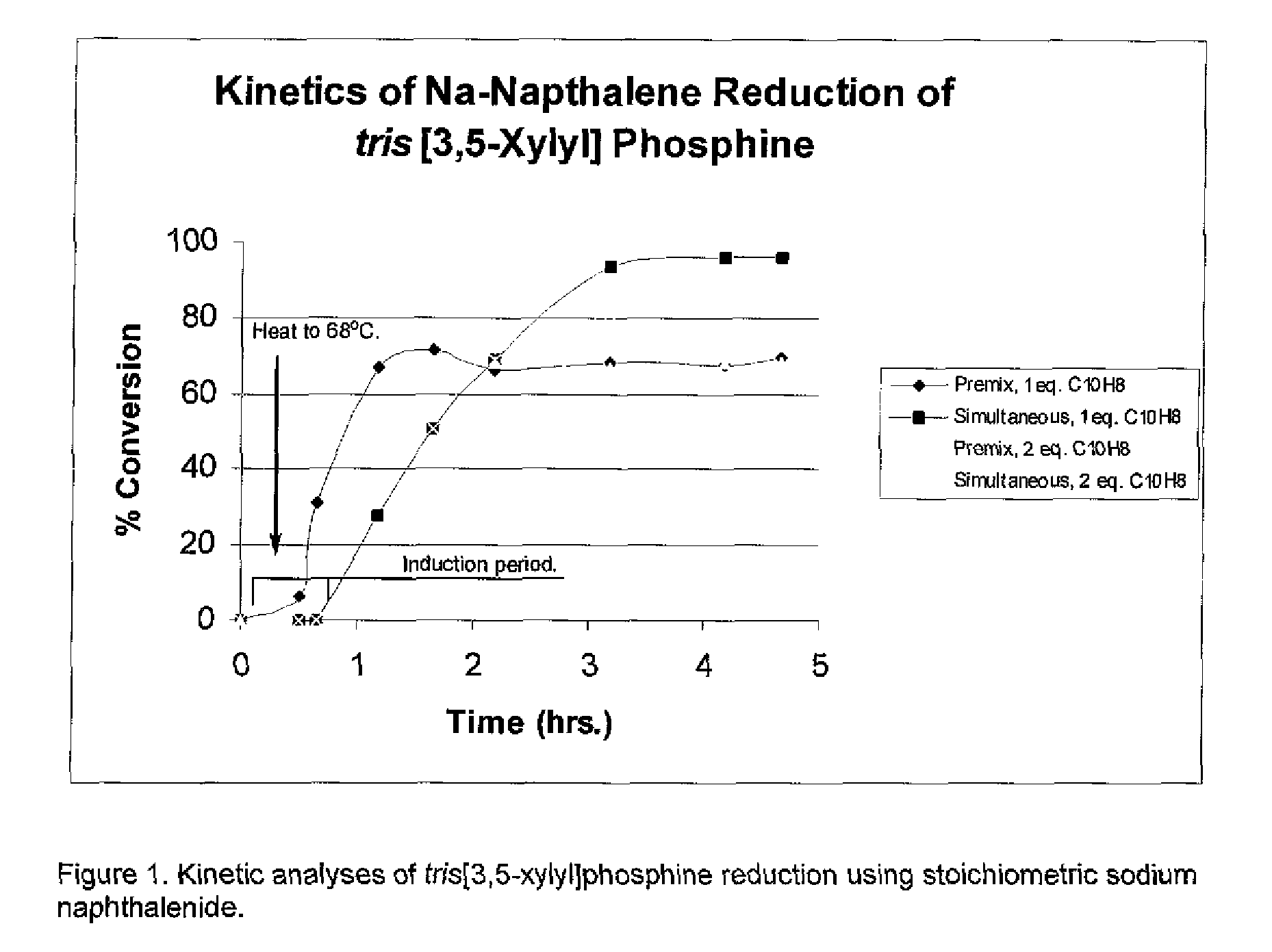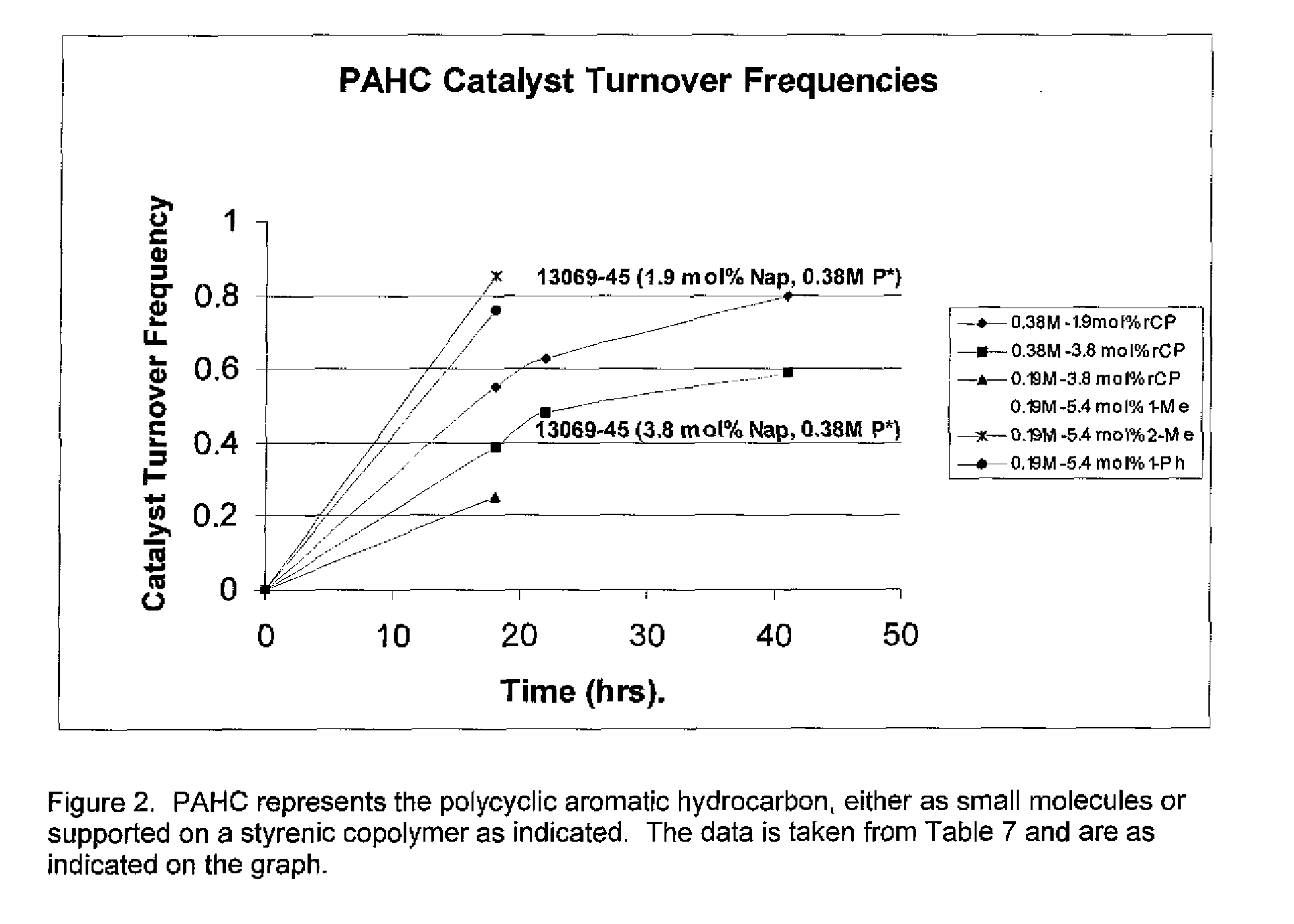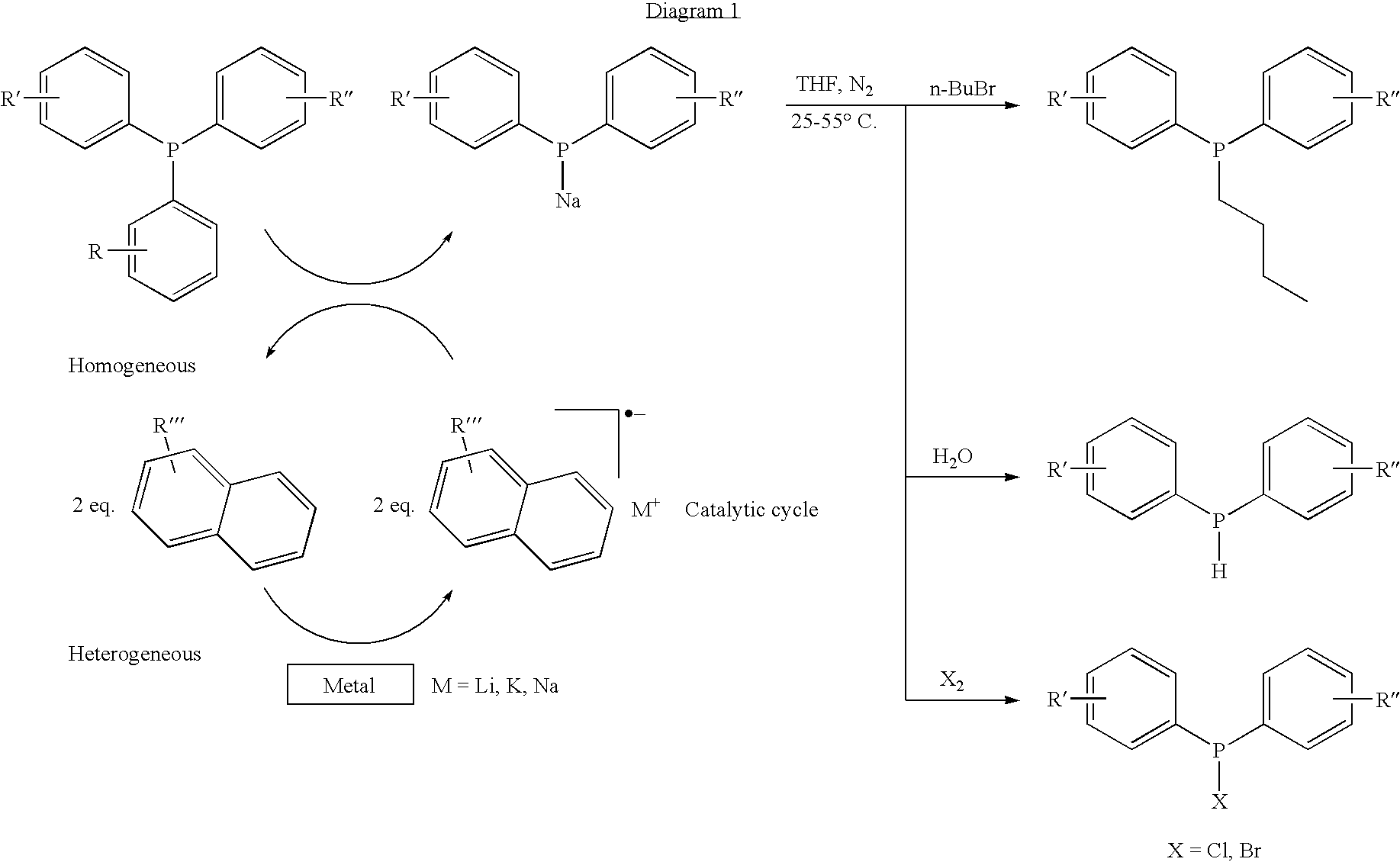Naphthenic hydrocarbon additives for diaryl phosphide salt formation
a technology of diaryl phosphide and additives, which is applied in the direction of organic compounds/hydrides/coordination complex catalysts, metal/metal-oxide/metal-hydroxide catalysts, and physical/chemical process catalysts. it can solve the problems of loss or decrease of substituted diaryl phosphine product yield and purities, and less desirable lithium metals
- Summary
- Abstract
- Description
- Claims
- Application Information
AI Technical Summary
Benefits of technology
Problems solved by technology
Method used
Image
Examples
examples
[0045]All polymerizations, as described below were done under batch conditions, i.e. all reactants were charged to the reactor, it was heated to effect polymerization, the polymer was isolated via precipitation, dried, and then evaluated for its ability to reduce a given triaryl phosphine to the corresponding sodium diarylphosphide salt.
[0046]Carbon black was added as a dispersion stabilizer during triaryl phosphine reductions to prevent the adverse event of dispersed alkali metal agglomeration.
Experimental:
[0047]All solvents used were anhydrous unless otherwise stated. The living radical nitroxide initiator Blocbuilder® from Arkema Inc. All air sensitive and pyrophoric materials were handled using generally accepted inert atmosphere handling techniques. Sodium dispersions were prepared using an IKA LR 2000 laboratory reactor system consisting of either a jacketed 2 liter or 500 mL kettle with a bottom Teflon® stopcock drain, a central sweep agitator capable of up to 200-900 rpm, an...
example 2
[0064]See Method 2). B). i). For general method of conducting these naphthenic catalyst evaluations. 31P NMR was sued to screen the rate of and selectivity for the desired sodium diphenyl phosphide salt. In all cases with TPP, a known phosphole by-product forms that does not form when the sodium dispersions are used in the reduction of TPP.
TABLE 5Na-Naphthalene Reduction of TPP to Sodium Diphenyl Phosphide.Expt.AdditiveConditionsResults5aIdentityMol %Temp. ° C.BHTTime (hrs.)% ConversionMol % Ph2PNaMol % Phosphole5bAnthracene5.045None18.069.8457.498.795cPhenanthrene18.0100.090.979.035dNaphthalene0.1 mol16.0100.092.037.235e1-Naphthoic acid89.7984.914.885f(4-Ethyl)biphenyl75.4767.456.435gBis(4-tertbutyl)biphenyl58.5051.485.685hNaphthalene2518.0100.091.806.7840.083.397.1296.087.036.955iNaphthalene1.44518.093.236.775j25.091.747.205k0.1071.4663.395.415l0.5094.6285.365.49
Example 3
[0065]
TABLE 6Na-(Aryl / alkyl)Naphthelide Reduction of tris[3,5-xylyl]Phosphine to Sodium bis[3,5-xylyl]Phosphide...
example 3
[0066]See Method 2). C). in the Experimental section. Table 7 shows that the polymer supported variants also catalyze the reduction of the tris(3,5-xylyl)phosphine (3,5-TXP) to the corresponding phosphide 3,5-BXPNa, although with a lower efficiency than the small molecule, non-polymer variants listed. The column mol % Nap. Indicates how much of the respective catalyst was charged to the reaction. The reaction Time (hrs.) indicates when the reaction was stopped. The Mol % column indicates the mol % conversion of the 3,5-TXP to the 3,5-BXPNa salt (It's sort of a yield, but it was not isolated). The last column of [% Conv.] / ([mol % Nap][hr.]) is basically a crude screen of naphthenic catalyst efficiency. Note the table lists in order Small molecules, homopolymer supported naphthenic catalysts, and then the synthesized random copolymer supported naphthenic catalysts. The various polymeric variant structures are as indicated above Table 1. The polymer variants, although they can catalyze...
PUM
| Property | Measurement | Unit |
|---|---|---|
| Temperature | aaaaa | aaaaa |
| Temperature | aaaaa | aaaaa |
| Volume | aaaaa | aaaaa |
Abstract
Description
Claims
Application Information
 Login to View More
Login to View More - R&D
- Intellectual Property
- Life Sciences
- Materials
- Tech Scout
- Unparalleled Data Quality
- Higher Quality Content
- 60% Fewer Hallucinations
Browse by: Latest US Patents, China's latest patents, Technical Efficacy Thesaurus, Application Domain, Technology Topic, Popular Technical Reports.
© 2025 PatSnap. All rights reserved.Legal|Privacy policy|Modern Slavery Act Transparency Statement|Sitemap|About US| Contact US: help@patsnap.com



